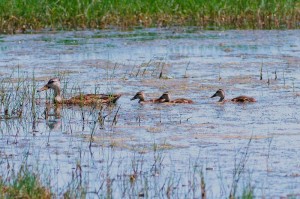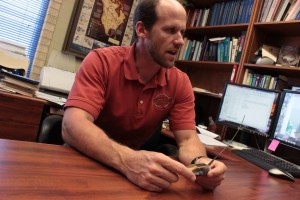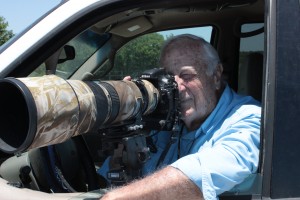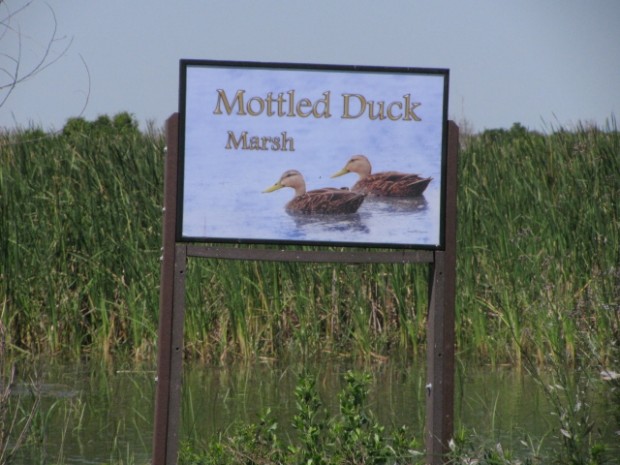In Texas, Less a Duck Dynasty than a Duck Dilemma

Courtesy Bob Woods
Mottled ducks in pond at Brazoria National WIldlife Refuge in Brazoria County
It can be tough being a duck these days in Texas. Next door in Louisiana, they’ve got cable TV’s big reality hit, Duck Dynasty. But in Texas, there’s less a dynasty and more of a dilemma, at least for one breed called the Mottled Duck.
“If you look at the composite of things they all suggest that in Texas, mottled ducks are declining,” said Bart Ballard. “Louisiana seems to be stable.”
Ballard is a scientist at the Caesar Kleberg Wildlife Research Institute at Texas A&M-Kingsville. He said estimating duck populations can be tricky. But according to a 2009 report for the U.S. Geological Survey, an analysis off data from 2005-2009 suggested “a rapidly declining mottled duck population” in Texas.

Dave Fehling / StateImpact
Researcher Bart Ballard holds GPS transmitter. It's used to track ducks though not mottled ducks
While researchers looked at duck hunting and natural predators like alligators as factors in the decline, Ballard said the consensus among scientists now points to changes in habitat.
“Part of it is, I think we don’t have the extensive coastal marsh like Louisiana does,” said Ballard.
What’s more, farmland that used to be a blessing for mottled ducks has disappeared.
“You get certain places like the Katy Prairie (west of Houston), for instance, that used to be a pretty important rice growing region. And no longer, it’s taken over with development.”
Subdivisions have replaced irrigated rice fields that for decades had provided ideal nesting places as well as food. And in more recent years, the severe drought has reduced rice farming even further.

Dave Fehling / StateImpact
Bob Woods has taken thousands of wildlife photos
It’s a change that amateur wildlife photographer Bob Woods of Missouri City has watched firsthand. Now retired, the 87 year old often comes to the Brazoria National Wildlife Refuge that lies south of some of the fastest growing suburbs in the nation.
“The (human) population growth has been absolutely staggering and wildlife is disappearing because of it, quite obviously,” Woods told StateImpact.
Using Satellites to Find Better Places for Ducks
There are efforts to create and protect habitats for mottled ducks including the Texas Prairie Wetlands Project and the Gulf Coast Joint Venture. But in the past, determining where to spend funds to develop or restore habitat for ducks involved a lot of educated guessing.

Dave Fehling / StateImpact
Anastasia Krainyk is using satellite and crop data to develop a computer "tool" for locating ideal duck habitats
To increase the odds that projects would indeed help mottled ducks, the Caesar Kleberg Wildlife Research Institute is developing a computer-based tool.
“It’s supposed to help people pinpoint the areas where it would best benefit mottled duck populations,” said Anastasia Krainyk, a graduate student working on the project.
“We use satellite images, national wetlands inventory data sets, and cropland data,” said Krainyk. The computer “tool” is expected to be operational by fall and could help find land that has what mottled ducks want: tall, dense grasslands for nesting but in close proximity to wetlands for food. The result could be a halt to the declining mottled duck population or maybe even an increase.
“Duck hunting is a pretty important economic thing in Texas.,” said researcher Bart Ballard.
“A lot of the money hunters put into licenses goes back into landscape management. (The Mottled Duck) is a prized duck on the Texas coast. But it’s also just part of the ecosystem.”

Dave Fehling / StateImpact
Federally-funded duck habitat developed by Texas Public Lands Wetlands Initiative
